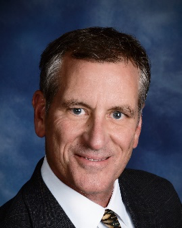June 2017 – Institute Reports
INSTITUTE REPORTS – JUNE 2017 NEWSLETTER
Environmental Water Resources Institute, San Francisco Chapter (EWRI-SF) Update
EWRI-San Francisco Chapter has Water on the Brain
By Fred Blickle, P.E., M. ASCE
Chair, EWRI-San Francisco Chapter, and Principal, GHD Inc.

Or more appropriately put, we’ve had water on our minds a good deal lately at the Environmental Water Resources Institute, San Francisco Chapter (EWRI-SF). Various challenges and issues surfaced of late that has brought water to the front page for many people considering the issues with too much water in too short a period of time in California. The Oroville Dam, north of Sacramento, was bulging at the seams earlier this year when water had to be released from an emergency spillway to protect the dam from collapsing. 200,000 people were evacuated from the area until engineers could determine that the surrounding residents were no longer at risk from dam collapse. The release caused extensive damage to the dam spillway, with current estimates of $275 million price tag for spillway repairs that need to be completed before the start of the next rainy season (November 1st).
Many hill slides and road slides occurred throughout the State earlier this year, as a combination of water-logged soils and gravity took over and moved soil and rock to places where people would rather not have it. Whole football fields in San Bernardino County slid! Big Sur was closed due to slides across the Pacific Coast Highway. Numerous other roads have been impacted from these slides. It’s no wonder, as all weather stations across the State are reporting well over 100% of the average rainfall year to date for this Water Year (which runs October 1st through September 30th). Some are reporting over double the average yearly rainfall! For areas that are not accustomed to a lot of rainfall, this causes problems. Average rainfall for the Bay Area is about 24 inches per water year, compared to the State of Florida which has a statewide average of nearly 30 more inches. Florida is however much more accustomed to managing all that water’s impact on their land and structures.
The city of Los Angeles is presently wondering where they are going to put all the water that will be heading their way in a few weeks when snowfall melt reaches its peak. Squaw Valley is staying open for skiing past July 4 this year. What is going on? Didn’t we just endure harsh water restrictions in 2015, and didn’t we pass Proposition 1 to the tune of $7.5 billion because we were running out of water? El Nino is what’s going on, and we are experiencing unusually high precipitation on the west coast currently, although this may soon return to the typical dryer climate cycles. El Nino, which means The Little Boy or Christ Child in Spanish, was originally recognized by fisherman off the western coast of South America with the appearance of unusually warm water in the southern Pacific Ocean that occurred around December. According to the National Oceanic and Atmospheric Administration (NOAA), El Nino begins when the Humboldt Current, which flows south to north along the western coast of South America and turns west at Ecuador and runs at Galapagos, stops for some unknown reason. This starts a chain reaction that spans around the world causing warmer, wetter weather in some locations, and drier hotter weather in others. These changing weather patterns can result in huge changes in crop production, and massive die-off in certain animal species, due to breaks in the food chain. El Nino generally lasts for 9 to 12 months, but can extend for years. It is followed by La Nina, periods of below-average sea surface temperatures across the east-central Equatorial Pacific.
EWRI-SF and the ASCE-Golden Gate Branch recently hosted dinner meeting speakers author Rita Schmidt Sudman and artist Stephanie Taylor, who had published the book “Water, More or Less”. The speakers profiled a few examples from their very interesting book which features information from interviews with twenty top water leaders in the state; representing diverse views, insights, and options for solutions. Stephanie’s paintings and photography brought life and impact to the topics of which Rita spoke. Both Institute members and other attendees found the meeting very informative.
Water issues were also the focus of the EWRI World Environmental & Water Resources Congress which was held in Sacramento, California from May 21-25, 2017. The overall theme was “Creative Solutions for a Changing Environment”, with a primary focus on water and weather cycles, and a keynote speaker being Dr. Marty Ralph, Director of the Center for Western Weather and Water Extremes, UC San Diego Scripps Institute of Oceanography. More information from the Congress can be found at www.ewricongress.org
Created in 1999, EWRI is the recognized leader within ASCE for the integration of technical expertise and public policy in the planning and design, construction, and operation of environmentally sound and sustainable infrastructure impacting air, land and water resources. http://www.asce.org/environmental-and-water-resources-engineering/environmental-and-water-resources-institute/
For more information about the EWRI-SF, please contact Fred Blickle, PE, Chair, EWRI San Francisco Section at fblickle@ghd.com
